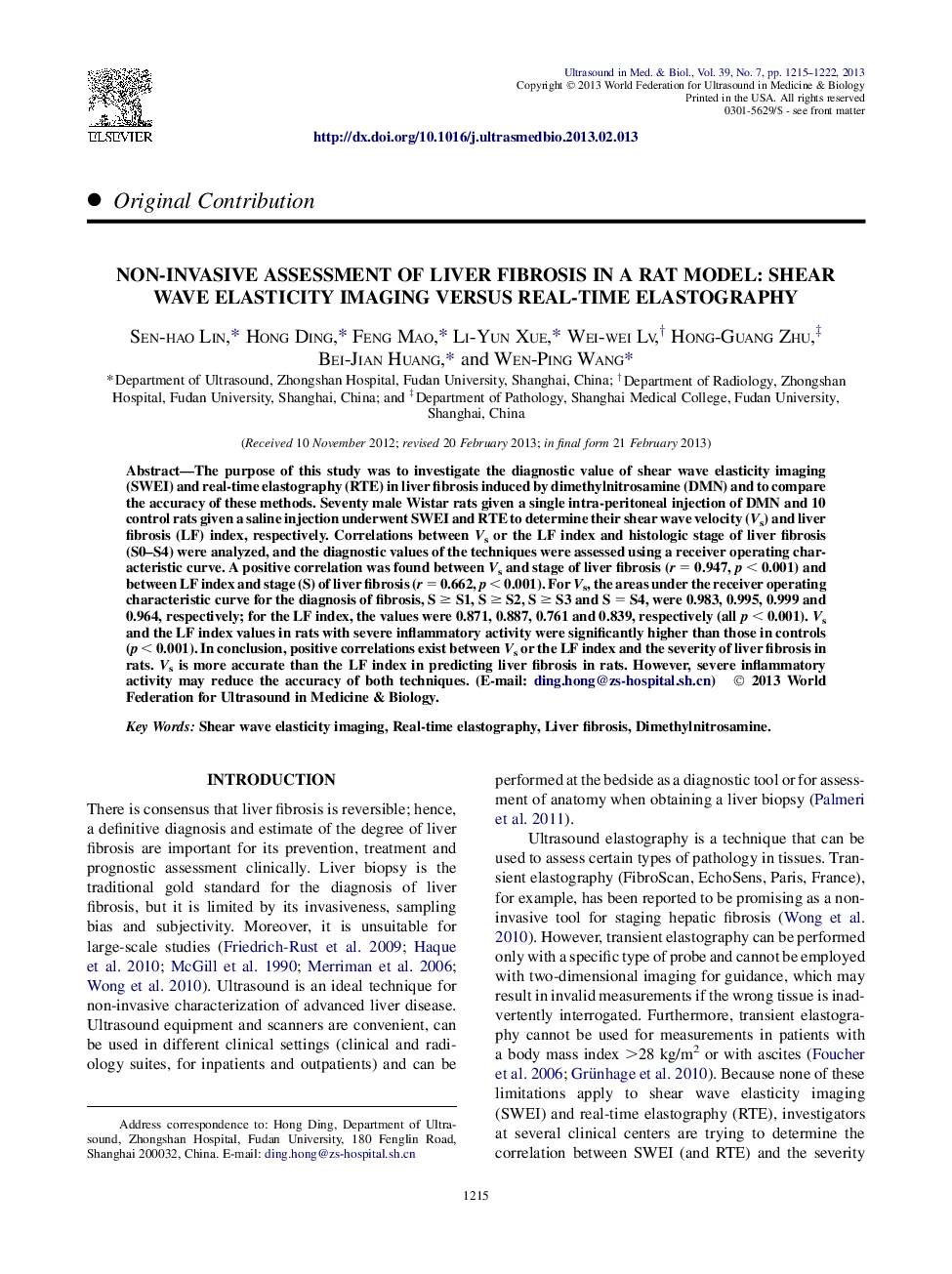| Article ID | Journal | Published Year | Pages | File Type |
|---|---|---|---|---|
| 10692075 | Ultrasound in Medicine & Biology | 2013 | 8 Pages |
Abstract
The purpose of this study was to investigate the diagnostic value of shear wave elasticity imaging (SWEI) and real-time elastography (RTE) in liver fibrosis induced by dimethylnitrosamine (DMN) and to compare the accuracy of these methods. Seventy male Wistar rats given a single intra-peritoneal injection of DMN and 10 control rats given a saline injection underwent SWEI and RTE to determine their shear wave velocity (Vs) and liver fibrosis (LF) index, respectively. Correlations between Vs or the LF index and histologic stage of liver fibrosis (S0-S4) were analyzed, and the diagnostic values of the techniques were assessed using a receiver operating characteristic curve. A positive correlation was found between Vs and stage of liver fibrosis (r = 0.947, p < 0.001) and between LF index and stage (S) of liver fibrosis (r = 0.662, p < 0.001). For Vs, the areas under the receiver operating characteristic curve for the diagnosis of fibrosis, S ⥠S1, S ⥠S2, S ⥠S3 and S = S4, were 0.983, 0.995, 0.999 and 0.964, respectively; for the LF index, the values were 0.871, 0.887, 0.761 and 0.839, respectively (all p < 0.001). Vs and the LF index values in rats with severe inflammatory activity were significantly higher than those in controls (p < 0.001). In conclusion, positive correlations exist between Vs or the LF index and the severity of liver fibrosis in rats. Vs is more accurate than the LF index in predicting liver fibrosis in rats. However, severe inflammatory activity may reduce the accuracy of both techniques.
Related Topics
Physical Sciences and Engineering
Physics and Astronomy
Acoustics and Ultrasonics
Authors
Sen-hao Lin, Hong Ding, Feng Mao, Li-Yun Xue, Wei-wei Lv, Hong-Guang Zhu, Bei-Jian Huang, Wen-Ping Wang,
